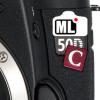Leaderboard
Popular Content
Showing content with the highest reputation on 05/10/2014 in all areas
-
This site is excellent for info on manual lenses and has good info on care and repair, getting a basic toolkit together and all that. http://forum.mflenses.com/equipment-care-and-repairs-f6.html http://forum.mflenses.com/basic-techniques-to-repair-lenses-and-cameras-t32862.html3 points
-

Van Diemen Cine-Iscorama Conversion - Review.
Zmu2 and one other reacted to Tito Ferradans for a topic
A lot has been questioned about this subject since it first showed up in >a> couple pictures uploaded to Redstan's flickr, or (four days later) in Andrew's first post about them, in late July, 2011. Almost three years have passed and still we don't have enough objective reviews and facts about this mod. I'm gonna try to achieve this goal here. I'm starting with a bit of history (which involves some guessing), but feel free to skip it. :) At first, it seemed that Alan (Redstan) was the one responsible for the whole thing, but now I believe he was the one who presented the the job to Van Diemen, and made a whole bunch of them at a huge cost and time. I don't think he sold any of these from the first batch, since we never heard of anyone reselling them, or using anything like that, but I might be wrong (Tony, feel free to chime in and correct me if this is wrong information). Then, time passed and a year and a half later comes Andrew Wonder, who was also featured on another EOSHD post involving a tuned iscorama, he called his "Wonderscope" and explained how he linked the pictures to Christopher Smith's machining job at Van Diemen. I come to believe it was only after this "indirect" advertising and lots of emails and questions from anamorphic shooters over the world that Van Diemen realised this "thing" could be a regular service they were the only ones able to provide. Partly thanks to Tony's many inputs on the original design and partly thanks to the sudden interest in the subject. If I'm not mistaken, early 2013 was the moment when other shooters from this forum started sending their lenses over, and we had all the fuss regarding HUGE delays in delivery and processing orders. People had their lenses trapped there for over six months, etc. Just search the forum for "Van Diemen" and some of these will be listed, followed by multiple users asking various questions about the mod. Mainly "is it worthy?", which is a VERY subjective question. I've sent my pre-36 Iscorama lens from Brazil in early December, 2013, after extensive emails with Christopher, at Van Diemen. My main concern was the time it would take to complete the job. He assured me I would have the lens back in 90 days. Recently, other forum members have reported they're >speeding the process to only a week, which is amazing (of course, this doesn't take into account the time spent during shipping). The mod is listed on Van Diemen's website, and costs £850.00 + shipping (and another £95.00 if you want special engraving). That rounds to about US$1500, which, we all should agree, is a big amount of cash. It's important to remember that not all Iscoramas are eligible for the conversion as well. Tony has pointed out that the inner workings of the anamorphot are kept intact, so if you have defective glass or bad internal mechanisms, these will be passed onto the mod. Christopher confirmed this by informing that all lenses are verified once arriving at VD's, and every single defect is reported back to the owner, as you're asked if you want to proceed with the conversion (mine has some faint markings on the rear glass). Now, what does the mod do, EXACTLY? The original Iscorama 36 weighs about 400g, has a fully plastic housing (which is pretty fragile) and focuses down to 2m without diopters (or >closer, through a hardcore mod). Rear thread is 49mm and you need some spacers to avoid hitting its rear glass onto the taking lens' front glass. Goes as wide as 50mm on a full-frame sensor and has a simple button feature for alignment. Focus throw is long (around 8mm), and if you modded yours for close focus, you need special attention so you don't drop the front element to the ground. The VD conversion weighs 680g (220g lighter than an Iscorama 54, and still much smaller than the 54 beast), because the housing is solid metal. Also, it has standard 0.8 pitch focus gears. At some point during assembly, Christopher sends you an email, confirming if focus engravings should be in feet or meters, and it focuses down to 1.1m (or 3' 7") without diopters (it's twists a little over 360 degrees, and that impresses me every time I do it), even though the closest focus engraving is 1.2m (the 1.1m mark would overlap with the infinity mark). Focus throw is 1cm long, beating the close focus mod and making your life really hard if you want a follow focus that is able to spin from infinity focus down to 1.1m. Rear threads are 58mm, and it does increase vignetting a little. It shows very slight vignetting on a Helios 44 (58mm) if stopped down, on a full-frame sensor. Aligning is still very simple, much like 1.33x lenses, where you have a rotating part with a small screw that locks the lens into position. Mine had the alignment buttons in really bad shape, so this new housing made aligning really simple, and I don't have to worry about breaking the lens apart in the process. They're also kind enough to include front and rear lens caps for safer transport. I also read - after my conversion was done - that Van Diemen redesigned the rear (clamp-like) part of the housing to avoid this extra vignetting. I couldn't find the link pointing to where I read that. If someone knows what I'm talking about, please comment below and I'll update the post! Also, if you want to improve it even more, you can follow >jaquet's tips and stuck it into a lens support so you don't even need to align it ever again. There's a recurring comparison between VD and a 54, and they are, indeed, different lenses. First of all, VD isn't necessarily multicoated, like all 54's, it's still a "medium" lens (not as small as the original 36 nor as big as the 54), but it doesn't draw so much attention, so you still have the stealth factor. Front thread is 72mm, which is a blessing for finding and using diopters, quite the opposite of the 95mm filter threads on the Isco 54. Please consider that I've owned (and used) an Isco 54 for over a year, so these aspects aren't guesses at all. The full metal body is very nice too, since many Iscoramas have had rough times since they left Isco's factory, 30-40 years ago. Mine had its filter thread broken to smaller chunks of plastic and was held together by an empty UV ring. This, added to the almost-stuck alignment mechanism, and close-focus mod made sure that I could not EVER rent the lens as it was. Damn, it's a $4000 lens, it would be nice to make some money out of it, right? VD's conversion lets you rest assured that your Iscorama will work like any regular professional lens should work: without any special information required (specially regarding quirks). Also, some other useful information not entirely related to the conversion: You should check in your country's customs office if there's a special form or procedure for items that are being sent out for servicing abroad and will return later. This will avoid paying extra taxes over the conversion costs. I know Brazil offers this option, and it's particularly useful, since I would pay a 60% tax over the declared value + shipping cost if it wasn't through this method. Plus Christopher is a really nice guy, who replies all messages and addresses every question you might have about the service. A good seller makes a hell of a difference for me.2 points -
Some purple stuff on my sensor :(
Inazuma reacted to P4INKiller for a topic
You could fix it using the built in tools in AE. Drop your footage into a comp; duplicate it so that you have two copies, one on top of the other; make a tight cut around the spots using masks, so there are holes on the top footage; apply blur on the bottom footage. You could use a plugin but I don't think you would get any better results. http://www.revisionfx.com/products/refill/1 point -
Kendy Ty and the T2i - one guy doing amazing things with a 5 year old DSLR
Daniel Acuña reacted to Lucian for a topic
If you couldn't follow the story you might want to try something simpler. Thor 2 might be more ya speed! Great film, the consistency on Thor's hammer throughout the film is flawless and leaves you feeling satisfied at the end of the film. I thought about his hammer for days afterwards....1 point -
Shooting sports stills with anamorphic: Suggestions?
Julian reacted to Caleb Genheimer for a topic
Get both front and rear clamps, well worth the extra price. I have the same lens you have with Redstan clamps. Having the Redstan clamps with the anamorphic will increase it's resale value considerably, should you be worried about such things. Ask him if he still has 0.4 ATX Tokina diopters for sale. They're the best diopter out there, and they're not getting any easier to find. He had some when I got clamps, so I got one, and let's just say I'm never getting rid of it, even if I do upgrade anamorphics.1 point -
Why is it so bad? Umm... how old are you? So in real life it's a non-issue, huh. Sounds like a poorly grounded or cheaply done audio out plug and/or amp on the motherboard. A bummer, but surely not a "serious bug," as someone screamed. Hopefully they'll fix it in the next batch of hardware. Meanwhile, just go out and shoot something. Go and listen to the buzz of a bumblebee or a ladybug to distract you from the headphone buzz. See? An alleged Panasonic hating Sony shooter defending Panasonic, how can that be? :P Yeap, that sounds more like it. Either that, or dodgy electronics/workmanship in general behind the line out plug. Hopefully the better headphones designed for audio monitoring are the ones supported by Panasonic.1 point
-

Learning to repair lenses...
William Guy reacted to dahlfors for a topic
I've opened a Nikon 50mm E Series prime lens and an old manual focus Sigma 80-250mm zoom lens (Pentax K). Neither of these were expensive, so it wasn't much of a risk. The 50mm E Series was easy to open up, and easy to get back together again. The Sigma zoom however... I tried getting it back together for 30-40 minutes or so, but no matter how I tried assembling it, something with the zoom mechanism went wrong - I couldn't get it to zoom the whole range, just perhaps a third or a half of the original zoom range. It wasn't a lens that really mattered to me, so I didn't bother spending more time on it. But, from my own experience and from what I've heard from the camera service shops in town - zoom lenses in general are much more complicated if you need to open them up fully, and will take a lot more time to service. Personally, I wouldn't open up any of my AF lenses. Even though I'm not fully certain that it is so - I'm expecting them to be more complicated and that there's a risk of misaligning something. My own conclusion: If it's older primes that aren't much worthy because of their current condition, I'd open them up and attempt service myself. Zoom lenses - I guess it depends on their design and what part of them that you need to service. The one I attempted service on had to be fully disassembled to clean the lens I needed to clean (oil spots). Had I not had to disassemble it entirely, it would have been a lot easier to assemble it since I wouldn't have needed to disassemble that zoom mechanism. For cleaning elements, I'd ask some camera lens service shops. I asked at one of the local shops about cleaning coated elements here in Stockholm, and they were very happy about giving advice. According to them one of the best fluids for cleaning lenses (this was in the context of older lenses, I'm unsure if they advised it for only those or for newer lenses as well) was acetone. Before using something like acetone on a lens though, I'd strongly recommend to google around and find out more about the risks of using such a fluid for cleaning lenses. Here's one discussion about that at least: http://www.pentaxuser.co.uk/forum/topic/will-using-acetone-to-clean-a-lens-affect-smc-coatings--35361 Another good tip: Try to see if you can find some *very* cheap lenses in a second hand shop or such and use those for learning.1 point -
Terrible arguments. Fast and expensive media. For example, the Panasonic GH4 requires a UHS-II Class 3 SDXC card. Not just a 95MBs capable card, but a state of the art one that costs US$250 for a 64GB card. That might net you 80 minutes of video (still haven’t gotten a chance to verify that). It’s possible we’ll see some cameras that use far more compression that can use slower cards, but isn’t the point of 4K to get ready for the next generation of TV, whenever it comes? You don’t want to be the “fuzzy†provider of 4K output, do you? False. 100mbps 4K works fine with pretty much all my UHS-II cards. Also, sd cards are dirt cheap (for example, a Lexar 64GB 600x works like a charm, this is an expensive brand. Cost? a whopping $70 :)) Really, 100mbps isn't exactly lots of data/second. It's hardly more than the GH3 at max bitrate (70mbps). Lots of storage. Thing is, you’re likely to want to preserve video quality during editing, which means transcoding into something like ProRes format. Prepare to be shocked at how big the files get. Really shocked. As in your 80 minutes of video off that expensive card is now 256GB or larger. By the time you build proxies, create a timeline, etc., your single card now may taking up more than half a terabyte. Remember, you also need backups to everything, so okay, we’ve probably crossed the terabyte line. Why would you transcode during editing? When you open the source file in a 32 bit project (standard in premiere I think?) You'll always have the maximum 'room' available. Just choose your codec of choice for export. Keep the source files in their small 100mbps format. A new MacPro. This was an eye-opener to me. My current gear is quite capable of editing and running the video projects I do (all 1080P at the moment) in real time. My first 4K test? Uh, not so much. Not at all. I have a PC that was high end 3 years ago (Intel i5 2,4 Ghz, 16GB ram, 180GB SSD, Nvidia GTX 660) and I can edit the Panasonic GH4 files just fine. Maybe you need to upgrade a part of your system a bit, you really don't need a $3K MacPro. Definitely don't let those arguments get in the way of your interest in the GH4 :)1 point
-

5D Mark III raw versus Panasonic GH4
Boumba reacted to Christina Ava for a topic
yes ive seen it, amazing doc. he died in 2007? :( i really liked shallow dof, but i started to notice that all my favorite directors-dp's shoot with extreme depth, and have very stylized compositions, almost everything in focus. as i said its my personal opinion, that the better you are the deeper your depth is, the more natural your light is, and the wider your lens becomes, then its all composition and meticulus work, and to bring things into context, you now have a 4k camera, i bet gregg toland would have flipped with this tool in his hand..so much detail,to waste in blurry backgrounds and closeups.1 point -

Slider - "must have", or meh...?
Julian reacted to fuzzynormal for a topic
I do often. Because it fits the type of corporate gigs I'm doing these days. It's a short slide 24." For my jobs that works. I don't do a lot of it though for my personal work though. However, I recently tested emulating dolly shots hand held with an Oly E-M5 and was very satisfied with the results. It requires some tai chi body control, but it's very do-able. I was trying to figure out if I could use the camera on an upcoming documentary that'll put me in the field hiking 15 miles every day for two months. Obviously in that situation I want my kit extremely minimized. I'm just taking the camera and two lenses... I might have limited gear on that assignment, but with that 5-axis stabilization I don't feel like my shot abilities will be.1 point

